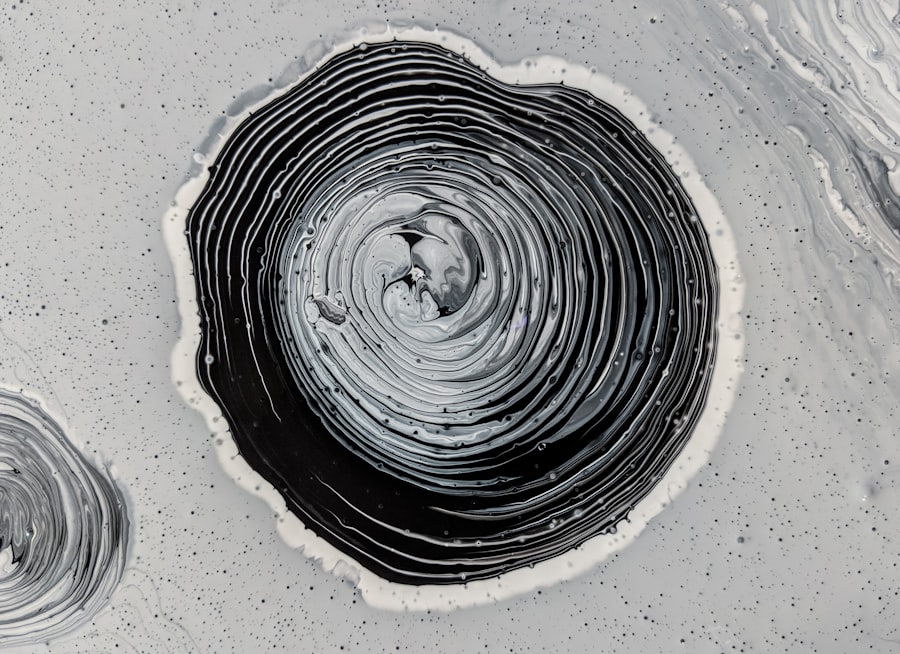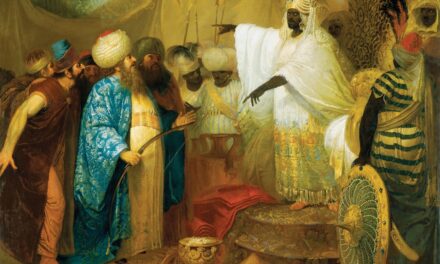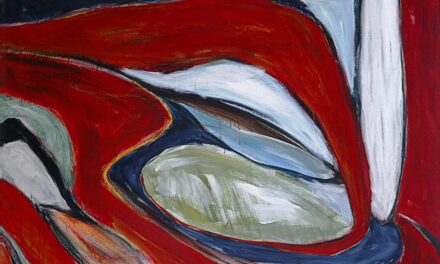René Magritte, a prominent Belgian surrealist artist, was born on 21 November 1898 in Lessines, Belgium. He was the eldest of three brothers and was raised in a working-class family. Tragically, when Magritte was 14 years old, his mother took her own life by drowning herself in the River Sambre.
This event had a significant impact on Magritte and would later influence his artwork. Following his mother’s death, Magritte’s father enrolled him at the Académie Royale des Beaux-Arts in Brussels, where he studied under the tutelage of painter Constant Montald. It was during this period that Magritte developed his distinctive style and began to experiment with surrealism.
Magritte’s formative years and education substantially influenced his artistic style and subject matter. His experiences with tragedy and loss, coupled with his formal training at the Académie Royale des Beaux-Arts, shaped his approach to art. These early years established the foundation for the surrealist movement that would come to define his career.
The early life and education of René Magritte were characterised by personal tragedy and artistic exploration. His experiences with loss and formal training at the Académie Royale des Beaux-Arts in Brussels played a crucial role in moulding his artistic style and approach to surrealism. These formative years were instrumental in laying the groundwork for Magritte’s future success as a surrealist artist.
Summary
- René Magritte was born in Belgium in 1898 and showed an early interest in art, studying at the Académie Royale des Beaux-Arts in Brussels.
- Magritte was heavily influenced by the Surrealist movement and the works of Giorgio de Chirico, using dreamlike imagery and juxtaposition to challenge the viewer’s perception of reality.
- Key themes in Magritte’s work include the use of ordinary objects in unexpected contexts, the concept of hidden meaning, and the exploration of the relationship between words and images.
- Notable artworks by Magritte include “The Treachery of Images” and “The Son of Man,” and his legacy continues to influence contemporary artists and popular culture.
- Magritte’s personal life was marked by tragedy, including the suicide of his mother, but he found happiness in his marriage to Georgette Berger and their shared love of art. His impact on contemporary art is evident in the works of artists such as Andy Warhol and Jasper Johns. Magritte’s work has been exhibited worldwide and continues to receive recognition for its lasting impact on the art world.
Surrealist Movement and Influences
Magritte’s work is often associated with the surrealist movement, which emerged in the 1920s as a response to the devastation of World War
Magritte’s unique approach to surrealism set him apart from his contemporaries. While other surrealist artists often depicted dreamlike or fantastical scenes, Magritte’s work was characterised by its use of everyday objects in unexpected contexts. He frequently used ordinary objects such as pipes, bowler hats, and apples in his paintings, creating a sense of dislocation and mystery.
This approach to surrealism, known as “magical realism,” became a hallmark of Magritte’s work and set him apart as a leading figure in the surrealist movement. Magritte’s work was deeply influenced by the surrealist movement, which sought to explore the unconscious mind and challenge traditional artistic conventions. His unique approach to surrealism, known as “magical realism,” set him apart from his contemporaries and established him as a leading figure in the surrealist movement.
His use of everyday objects in unexpected contexts created a sense of dislocation and mystery that became a hallmark of his work.
Key Themes and Motifs in Magritte’s Work

Throughout his career, Magritte explored a number of key themes and motifs in his work. One of the most prominent themes in his art is the concept of reality and illusion. Many of his paintings challenge the viewer’s perception of reality by presenting familiar objects in unfamiliar ways.
For example, in his famous painting “The Treachery of Images,” he depicts a pipe with the caption “Ceci n’est pas une pipe” (This is not a pipe), forcing the viewer to question the nature of representation and reality. Another recurring motif in Magritte’s work is the use of veils and curtains to obscure or reveal hidden meanings. This motif is often used to create a sense of mystery and ambiguity in his paintings, inviting viewers to question what lies beyond the surface.
Additionally, Magritte frequently incorporated elements of nature, such as clouds and birds, into his work, using them to symbolise freedom and transcendence. Magritte’s exploration of reality and illusion, as well as his use of veils and curtains to create mystery, are key themes that run throughout his body of work. His use of everyday objects in unexpected contexts challenges the viewer’s perception of reality and invites them to question what lies beyond the surface.
These themes and motifs are central to understanding Magritte’s unique approach to surrealism.
Notable Artworks and Legacy
René Magritte is best known for his iconic paintings that challenge the viewer’s perception of reality. One of his most famous works is “The Son of Man,” which depicts a man in a bowler hat with an apple obscuring his face. This painting has become an enduring symbol of Magritte’s unique approach to surrealism and has been widely reproduced and referenced in popular culture.
Another notable work by Magritte is “The Lovers,” which depicts two figures kissing with their faces covered by cloth. This painting exemplifies Magritte’s use of veils and curtains to create mystery and ambiguity in his work. Additionally, “The Treachery of Images,” with its famous caption “Ceci n’est pas une pipe,” has become an iconic representation of Magritte’s exploration of reality and representation.
Magritte’s legacy as a surrealist artist continues to influence contemporary art and popular culture. His iconic paintings have been widely reproduced and referenced, cementing his status as one of the most important figures in 20th-century art. His unique approach to surrealism and exploration of reality and illusion have left a lasting impact on the art world.
Personal Life and Relationships
In addition to his prolific artistic career, René Magritte had a complex personal life that greatly influenced his work. In 1922, he married Georgette Berger, who became a central figure in many of his paintings. Georgette often appeared as a muse in Magritte’s work, embodying themes of mystery and ambiguity that were central to his artistic vision.
Despite his success as an artist, Magritte faced personal challenges throughout his life. In 1930, he experienced a period of financial hardship that forced him to take on commercial work to support himself and his family. This difficult period had a significant impact on his artistic output but ultimately led him to develop new techniques that would shape his later work.
Magritte’s personal life and relationships played a significant role in shaping his artistic vision. His marriage to Georgette Berger provided inspiration for many of his paintings, while his experiences with financial hardship led him to develop new techniques that would define his later work.
Impact on Contemporary Art

René Magritte’s influence on contemporary art is far-reaching and continues to be felt today. His unique approach to surrealism has inspired countless artists across different mediums, from painting to film and literature. His use of everyday objects in unexpected contexts has had a lasting impact on the way artists approach representation and reality.
Magritte’s legacy also extends to popular culture, where his iconic paintings have been widely referenced and reproduced. His work has been featured in films, music videos, and advertising campaigns, demonstrating the enduring relevance of his artistic vision. Additionally, contemporary artists continue to draw inspiration from Magritte’s exploration of reality and illusion, incorporating similar themes into their own work.
René Magritte’s impact on contemporary art is undeniable, with his unique approach to surrealism inspiring artists across different mediums. His influence can be seen in popular culture as well as in the work of contemporary artists who continue to draw inspiration from his exploration of reality and illusion.
Exhibitions and Recognition
Throughout his career, René Magritte received widespread recognition for his contributions to the surrealist movement. In 1936, he had his first solo exhibition at the Palais des Beaux-Arts in Brussels, which marked a turning point in his career. This exhibition brought him international attention and solidified his reputation as a leading figure in the surrealist movement.
In 1965, Magritte was given a major retrospective at the Museum of Modern Art in New York City, further cementing his status as one of the most important artists of the 20th century. This exhibition showcased over 100 works by Magritte and introduced his art to a new generation of art enthusiasts. Today, Magritte’s work continues to be celebrated through exhibitions at major museums around the world.
His paintings are held in prestigious collections, including the Tate Modern in London and the Museum of Modern Art in New York City. His enduring legacy as a surrealist artist is recognised through these exhibitions and collections, ensuring that his work will continue to be appreciated for generations to come. René Magritte received widespread recognition for his contributions to the surrealist movement through solo exhibitions at prestigious institutions such as the Palais des Beaux-Arts in Brussels and the Museum of Modern Art in New York City.
His enduring legacy is celebrated through exhibitions at major museums around the world, ensuring that his work will continue to be appreciated for generations to come.
If you are interested in learning more about the art movement that followed Impressionism, you should check out the article on Post-Impressionism. This movement, which includes artists like Vincent van Gogh and Paul Cézanne, built upon the techniques of Impressionism while also incorporating more abstract and symbolic elements into their work. To read more about Post-Impressionism, visit this article.
FAQs
Who is René Magritte?
René Magritte was a Belgian surrealist artist known for his thought-provoking and enigmatic paintings. He was born in 1898 and passed away in 1967.
What is René Magritte known for?
René Magritte is known for his surreal and thought-provoking paintings that often challenge the viewer’s perception of reality. He is famous for works such as “The Son of Man” and “The Treachery of Images”.
What are some key themes in René Magritte’s work?
Some key themes in René Magritte’s work include the juxtaposition of ordinary objects in unusual contexts, the exploration of the relationship between words and images, and the concept of hidden meanings and obscured truths.
What is the style of René Magritte’s art?
René Magritte’s art is often classified as surrealist, characterized by its dreamlike and irrational imagery, as well as its use of unexpected juxtapositions and visual puns.
What are some famous works by René Magritte?
Some of René Magritte’s most famous works include “The Son of Man”, “The Treachery of Images”, “The Lovers”, “The False Mirror”, and “The Human Condition”. These paintings are widely recognized and have become iconic representations of Magritte’s style.




